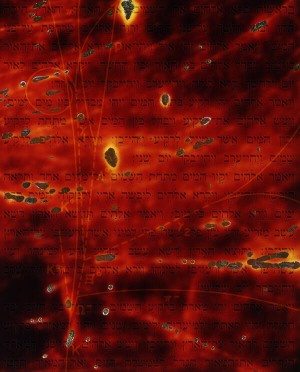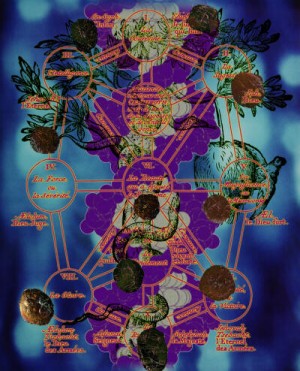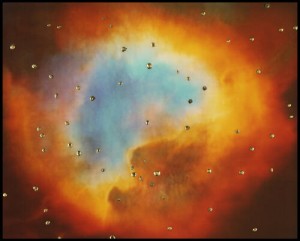Kabbalah for the Masses: Re-considering the Elitism of Medieval Jewish Mysticism
One of the claims frequently lodged against 20th and 21st century popularizers of Kabbalah — whether in commercial forms such as the Kabbalah Centre or New Age forms such as Neo-Hasidism and Jewish Renewal — is that they are making popular what is meant to be an elite discourse, reserved only for the few. This view stems from specific historical sources: from prohibitions stemming from late antiquity (famously formulated in Mishnah Hagigah 2:1) that certain subjects, especially matters pertaining to the mysteries of the divine, cannot be taught openly; and from Early Modern restrictions on Kabbalah study issued in the wake of the Frankist apostasy but maintained as a popular notion even today; and from the statements of some early kabbalists that their teachings are intended to be kept secret and should be reserved only for the most worthy students. Some scholars have also held the opinion that Kabbalah was from its inception a discourse of the elite. In Gershom Scholem’s words, most medieval Kabbalists were “a small group of esoterics who had little or no desire to spread their ideas.” (Scholem, Major Trends, 244)
The perception of medieval Kabbalah as a carefully guarded, secret discourse is the result of an overemphasis on some early kabbalists, as well as a narrow selection of texts that have received disproportionate attention due to their prominence in later centuries. In fact, many medieval kabbalistic texts reflect an explicit desire to introduce Kabbalah to readers who are just beginning to study Jewish esoteric lore. While this might not constitute “popularization” in the simple sense, since these texts were only accessible to relatively literate and erudite Jewish readers, it is nonetheless the case that more than a few kabbalistic treatises were composed with the openly stated purpose of instructing non-kabbalists in the study of Kabbalah.
1. Elitism vs. Dissemination
Medieval kabbalists do often emphasize in their writings that their words can only be understood by one who has had the proper instruction from a learned teacher. As Nahmanides famously states, the true mysteries of the Kabbalah must only be passed on “from the mouth of a wise kabbalist to the ear of an understanding kabbalist.” And, there is evidence that, at least in the late 12th and early 13th centuries in Provence, some rabbis who were well versed in Kabbalah, chose not to disclose kabbalistic matters in writing at all, and only rarely spoke of them. In addition, many Kabbalistic texts such as the Sefer ha-Zohar and the Sefer ha-Bahir, were intentionally composed to be difficult if not impossible to decipher by novices.
However, texts such as these, despite their prominence in later generations, are not fully representative of the literature generated by kabbalists in the mid and late 13th centuries on the Iberian peninsula. Dozens of texts were composed in the 1280s and 90s in Castile with the clearly stated goal of instructing novices in the wisdom of Kabbalah. While many of these texts are anonymous, and most were never printed in later generations, they are an important and understudied resource for appreciating the dissemination of kabbalistic discourse in the latter decades of the 13th century. The evidence of these compositions suggests that, as the 13th century drew to a close, kabbalists become more actively engaged in promoting the central claims of their understanding of Judaism, namely, that the Jewish tradition possesses a secret doctrine concerning the inner life of the Godhead, and that the practice of Jewish law has the power to influence the divine realm and sustain the connection between God and cosmos.
Late 13th century Castilian kabbalists were prolific writers. They composed commentaries on the Torah, explications of the secret meaning of rabbinic texts, detailed interpretations of the kabbalistic meaning of the commandments, poetic allegories, and texts intended to provide a general overview of Jewish law. One genre of kabbalistic writing from late 13th century Castile is the peirush or “commentary” on the ten sefirot or ten divine luminosities that serve as the basic symbolic structure of kabbalistic theosophy (Chavel, 1984, p. 7). Over one hundred of these commentaries were written in the late 13th and early 14th centuries. These compositions vary in length from a single page of text to 60 or 70 folios. The object of these commentaries is to provide a general grounding in kabbalistic symbolism by enumerating how each individual sefira corresponds to biblical names and terminology, letters, colors, directions, heavenly bodies, the human anatomy, and the practice of traditional Jewish law and ritual. An examination of these texts reveals a very different picture of medieval Kabbalah — one in which kabbalists are actively engaged in spreading their doctrine and providing tools to help bring neophytes into the conversation.
One interesting example can be found in a lengthy commentary on the ten sefirot entitled Sefer ha-Shem, or “The Book of the Divine Name.” Towards the end of the prefatory comments, the author states that he wrote it to create a guide to help those who are beginners in the wisdom of Kabbalah, as a service “to all of Israel, according to their capacity” and that he “saw fit to set forth a disquisition to enlighten the eyes of one who is beginning to learn Kabbalah” (Oron, 2010, p. 54). These passages clearly indicate the author’s interest in the instruction of the uninitiated in the wisdom of the Kabbalah.
We find a similar formulation in another anonymous commentary on the ten sefirot preserved in Milano Hebrew Manuscript 57, where the author introduces his work by stating that he wrote it for “one who desires [to comprehend] the wisdom of the Kabbalah in its entirety.” The author indicates that his enumeration of the divine names associated with each of the sefirot will serve as a guide to understanding the meaning of other kinds of Jewish texts, since “once one knows this, it will be possible for him when he reads a biblical verse or dictum of the Rabbis of blessed memory, or a matter described in a kabbalistic composition, that he will understand the intention of that verse or dictum, and to what matter it alludes. It is for this purpose that I composed this text.” Comments such as these are can be found in many places in the anonymous kabbalistic texts composed in late 13th century Castile. In light of this evidence, it would seem that we should revise our impression of Kabbalah as the carefully guarded occupation of a small elite group. The embrace of a discourse of esotericism need not imply the withholding of knowledge.
2. Making Sense of the “Jewish Condition”
The dissemination of Kabbalah in late 13th century Castile, however, existed for reasons quite different from those of the contemporary popularizers. Rather than present a universally accessible discourse for the attainment of self fulfillment, medieval Kabbalists sought through their compositions to establish a shared symbolic framework that reinforces the Jewish tradition by re-envisioning it as the exclusive path to true knowledge regarding the mysteries of the Godhead, the meaning of the Torah, and the power of Jewish religious praxis. Most commentaries, after establishing the ancient nature of the wisdom they communicate, provide a detailed description of the sefirot, listing each of their associated names, as well as the role that each sefira plays in the divine economy. The general structure is one in which the sefirot draw their sustenance from ein sof, the endless and infinite divine essence, and channel that divine energy into the world. Jews who properly perform the mandates of Jewish law, especially when they do so with the details of kabbalistic theosophy in mind, reinforce the harmony and contiguity of the sefirotic system. Those Jews who commit transgressions cause disharmony in the Godhead and interrupt the divine shefa or overflow as it passes through the sefirot and into the world. Knowledge of the sefirotic map and its relation to Jewish life is how the kabbalists understand the continued relevance of Judaism, and the position of power, however concealed, that Jews occupy in the world.
Such triumphalist assertions claiming unique Jewish knowledge of the divine realm abound in the commentaries on the ten sefirot. It is through being carriers of such powerful knowledge that these texts seek to depict the superiority of Israel over other nations. By knowing the divine structure through an esoterically transmitted tradition, Jews are well situated, according to these texts, to be able to influence the divine realm through their actions, since they know the relationships and homologies between the supernal and the terrestrial. This dynamic conception of the ten sefirot as subject in their functioning to the actions that Jews perform, or neglect to perform, both accords tremendous power to Judaism in the minds of the kabbalists, while providing a mechanism that accounts for the realities of medieval Jewish experience, since the Jewish historical predicament can be explained as the outcome of Jewish transgression. These texts evince a desire to make the reader aware of the consequences of their actions, for better or for worse, in relation the supernal plane.
For example, in a passage from an anonymous text entitled Mekor ha-Sekhel preserved in Bodleian Opp. 487, the author laments the trend that he observes among his fellow Jews of those who neglect prayer because they have come to regard it as worthless and ineffective. The author urges his readers not to follow such a path, but rather to recognize, on the basis of the sefirotic map, that “the prayers that come forth from a man’s mouth ascend to the place of the emanation of souls. And if it is pure and unblemished, free from impure thoughts, it shall go in peace,” (45r). The text then, interestingly, illustrates this conception of prayer, and the practice of Judaism more broadly, with a parable that makes intriguing use of the idea of mapping: “This matter can be compared to a house filled with silver and gold and many kinds of food and drink and treasuries with keys, and before them lay scorpions and pits, trenches and caves, and there is a single good path by which one may be saved from all of these evils. When a man arrives who wishes to obtain silver, gold, food, drink or other things, if he knows the location of these treasures, and he knows the pathway leading to them, he shall obtain everything he desires, ‘he shall enter in peace and depart’ (Hagigah 9a),’ and he shall find that which he seeks. But if he does not know the pathway leading to the treasures, he shall grope in the dark and fall victim to the creatures and pits.” (45r–v)
Many kabbalists indicate their sense that Jews, for a variety of reasons ranging from the spread of rationalism to the religious despair born of witnessing Jewish historical decline, are abandoning Judaism. Kabbalah, they believe, provides a mechanism for reinvigorating Jewish religious commitment by imagining Jews as theurgically empowered masters of a secret tradition. Kabbalah is portrayed as a guide to the storehouses of divine riches held in reserve for the Jewish souls who possess the secret knowledge that provides access to them, and as a remedy for Jews who question the purpose of practicing Judaism.
The kabbalistic conception of Judaism that arose in late 13th century Castile accords well with the increased interest in esoteric discourses such as Hermeticism and Neo-pyathagoreanism. By putting forth a claim to ancient, revealed knowledge stemming from antiquity, kabbalists were casting Jews, and an esoteric chain of Jewish transmission, in terms that would have resonated with other forms of esoteric knowledge. Moreover, the secrets concerning the power of Jewish ritual in relation to the incomprehensible, inner life of God that the kabbalists claim as the unique patrimony of the Jewish people can be understood as a response to Christianity, as well as Christian anti-Jewish argumentation. The image of Jews as a people blind to the inner meaning of their own scriptures, as humiliated wanderers who hold fast to an outmoded, superseded law, and thus must collectively suffer for rejecting Christ, is inverted in the symbolic thinking of the Kabbalah, wherein the cosmos is sustained by Jews performing the mandates of halacha. The development of Kabbalah as a distinctive and influential form of Jewish religious discourse finds its roots in an engagement across the perhaps overly constructed boundaries of Jews and Christians, philosophers and esotericists, traditionalists and kabbalists.
Jonathan Z. Smith has observed, building on the work of Kenneth Burke, that religious myths and their attendant “maps” of the world constitute “a strategy for dealing with a situation.” (1993, p. 299) The many kabbalistic texts composed during the late 13th century reveal one such strategy deployed by medieval Jews to address the meaning of Jewish life. This observation, I wish to emphasize, is not intended as an historical solution for understanding the emergence of Kabbalah. Rather, my intention is to point out the striking historical enigma that in a moment of perceived social threat, in a complex and diverse intellectual environment, a rabbinic Jewish culture, with its focus on ritual, law and established tradition, accepted as the inner core of the meaning of Jewish life a radical theosophy troped as a well guarded secret newly come to light. The fact that such claims could gain traction at all in medieval Jewish communities is counter-intuitive to say the least. But the historical and textual evidence suggests that it was precisely on the basis of such claims that kabbalists were able to initiate a substantial reformulation of the meaning of Judaism. An appreciation of the very public role played by kabbalistic claims to secrecy thus has much to tell us about the ways that medieval Jews, as engaged participants in the broader culture, imagined themselves and constructed models of religious meaning. Perhaps the most enduring aspect of kabbalistic discourse is its capacity to be shared without diminishing its perception as the secret that remains hidden.
References:
Chavel, C. (1984). Peirush al ha-torah le-rabeinu moshe ben nahman. Jerusalem: Mosad Harav Kook.
Oron, M. (2010). Sefer ha-Shem Attributed to R. Moses de Leon. Los Angeles: Cherub Press.
Scholem, G. (1995). Major Trends in Jewish Mysticism. New York: Schocken.
Smith, J.Z. (1993). Map is Not Territory: Studies in the History of Religions. Chicago and London: University of Chicago Press.
Hartley Lachter is Associate Professor of Religious Studies and Director of the Jewish Studies program at Muhlenberg College.
![[the current issue of ZEEK]](../../image/2/100/0/5/uploads/leftistethicistgraphic-52842c6a.png)
- 5000 Pages of Zeek
- Founded in 2001, Zeek was the first Jewish online magazine, and we have over 5000 pages online to prove it, all available free of charge. Read more in the Archive.
More articles by
Hartley Lachter
More articles in
Faith and Practice
- To-Do List for the Social Justice Movement: Cultivate Compassion, Emphasize Connections & Mourn Losses (Don’t Just Celebrate Triumphs)
- Inside the Looking Glass: Writing My Way Through Two Very Different Jewish Journeys
- What Is Mine? Finding Humbleness, Not Entitlement, in Shmita
- Engaging With the Days of Awe: A Personal Writing Ritual in Five Questions
- The Internet Confessional Goes to the Goats




